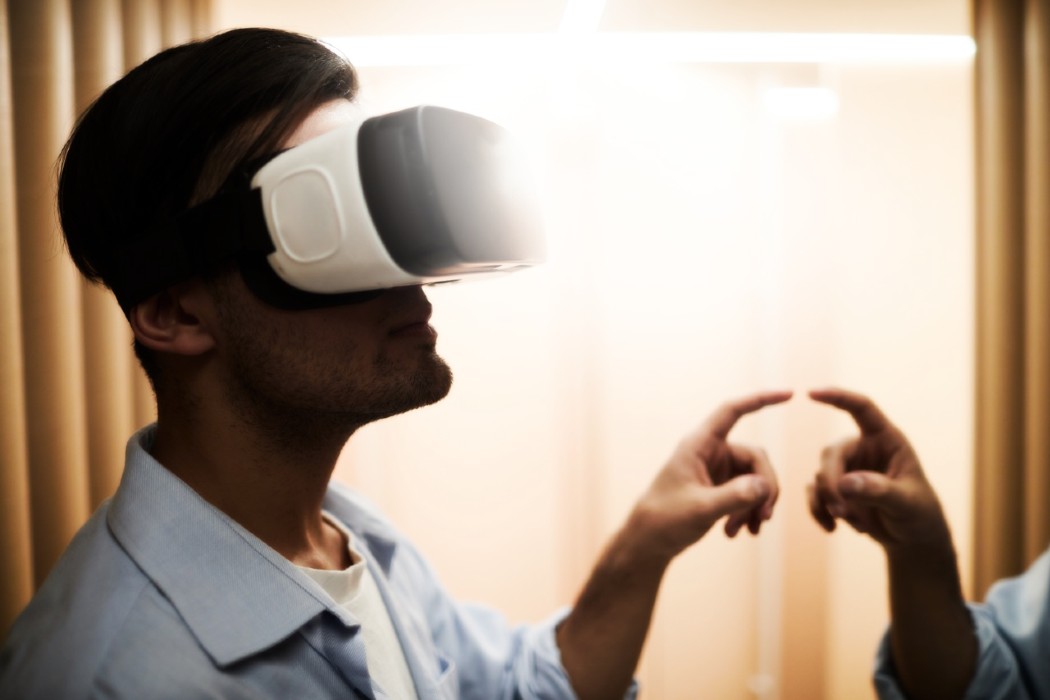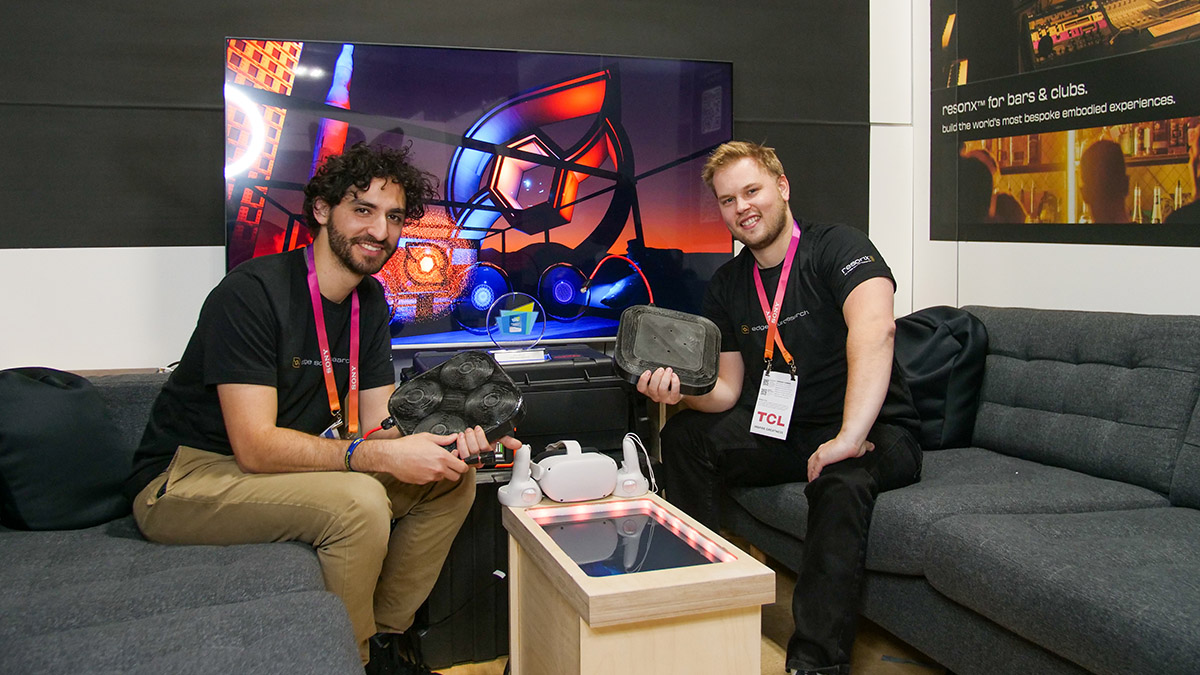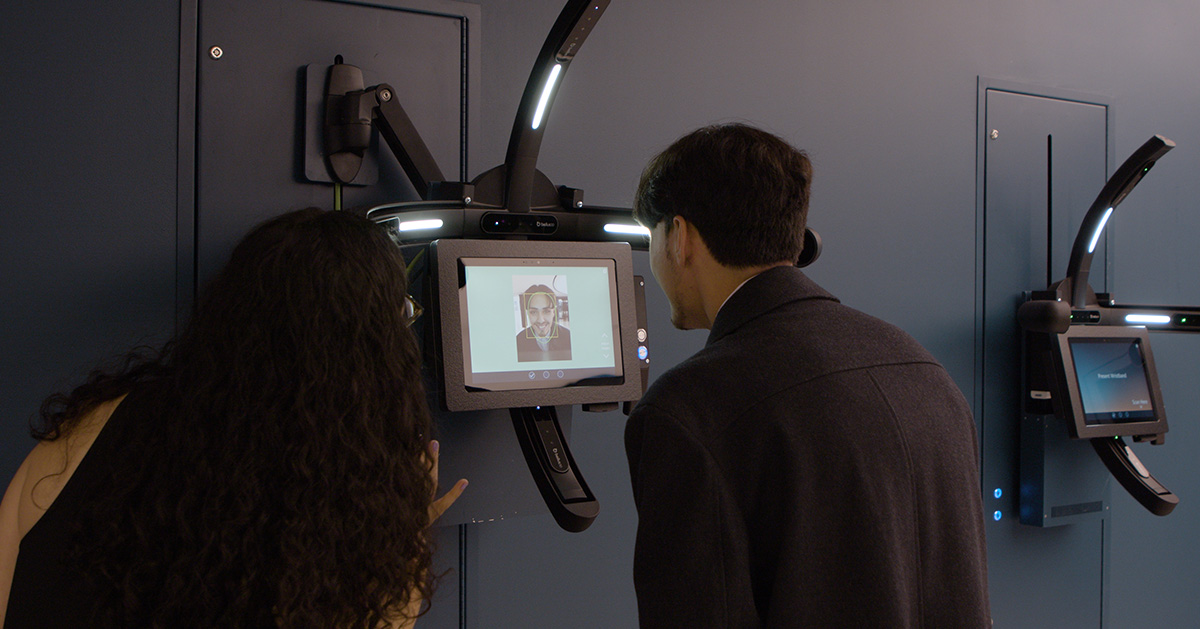Experiential Technology: Shaping Immersive Experiences
Experiential technology takes center stage, blurring the lines between the digital and physical worlds. This innovative approach goes beyond traditional technology, focusing on creating immersive and interactive experiences that engage […]

Experiential technology takes center stage, blurring the lines between the digital and physical worlds. This innovative approach goes beyond traditional technology, focusing on creating immersive and interactive experiences that engage users on a deeper level. Think virtual reality headsets transporting you to fantastical landscapes, augmented reality overlays adding interactive elements to your everyday surroundings, and interactive installations that challenge your senses and spark your imagination.
From entertainment to education, healthcare to retail, experiential technology is transforming industries by fostering engagement, enhancing learning, and forging lasting connections with audiences. By tapping into our senses and emotions, this technology creates experiences that are not only memorable but also impactful, leaving a lasting impression on users.
Defining Experiential Technology

Experiential technology is a rapidly evolving field that focuses on creating immersive and interactive experiences for users. Unlike traditional technology, which emphasizes functionality and efficiency, experiential technology prioritizes engagement, emotional connection, and the creation of memorable moments.
Examples of Experiential Technologies
Experiential technologies encompass a wide range of applications, including:
- Virtual Reality (VR): VR immerses users in computer-generated environments, allowing them to interact with virtual objects and scenarios. This technology is widely used in gaming, training simulations, and entertainment.
- Augmented Reality (AR): AR overlays digital information onto the real world, enhancing user perception and interaction with their surroundings. AR applications include mobile games, navigation apps, and industrial maintenance tools.
- Interactive Installations: These physical spaces incorporate technology to create engaging and interactive experiences. Examples include interactive museums, art installations, and themed entertainment attractions.
Differences Between Traditional Technology and Experiential Technology
While both traditional and experiential technologies leverage technological advancements, they differ significantly in their core focus and objectives:
| Feature | Traditional Technology | Experiential Technology |
|---|---|---|
| Focus | Functionality, efficiency, and task completion | Engagement, emotional connection, and memorable experiences |
| User Interaction | Passive consumption of information or execution of tasks | Active participation, exploration, and interaction with the technology |
| Application | Productivity tools, data processing, communication | Entertainment, education, marketing, and social interaction |
Applications of Experiential Technology
Experiential technology is not just a buzzword; it’s revolutionizing the way we interact with the world around us. From entertainment to healthcare, its applications are far-reaching and transforming industries.
Entertainment
Experiential technology is rapidly changing the entertainment landscape, offering immersive and interactive experiences that captivate audiences.
- Virtual Reality (VR) and Augmented Reality (AR): VR and AR are transforming how we experience movies, concerts, and video games. VR headsets create immersive virtual worlds, allowing users to interact with characters and environments in ways never before possible. AR overlays digital content onto the real world, enhancing our perception of reality. For example, the popular game Pokémon Go uses AR to bring Pokémon characters into our real-world environment.
- Interactive Installations: Museums and art galleries are leveraging experiential technology to create engaging and interactive installations. These installations can range from immersive projections that respond to audience movement to interactive exhibits that allow visitors to explore and learn in new ways. For example, the Museum of the Moving Image in New York City features an exhibit called “Behind the Screen,” which uses interactive technology to explore the history of cinema.
Education
Experiential technology is revolutionizing the way we learn, creating engaging and personalized learning experiences.
- Virtual Field Trips: VR technology allows students to experience virtual field trips to historical sites, natural wonders, and other destinations around the world. This provides students with a more immersive and engaging learning experience than traditional classroom learning. For example, students can take a virtual field trip to the Great Barrier Reef using VR technology to learn about marine life and the impact of climate change.
- Interactive Simulations: Experiential technology allows students to participate in interactive simulations that provide hands-on learning experiences. These simulations can range from medical training programs that allow students to practice surgical procedures to business simulations that allow students to learn about strategic decision-making.
Healthcare
Experiential technology is transforming healthcare by providing patients with more personalized and engaging care.
- Telemedicine: VR and AR are being used to create immersive and interactive telehealth experiences. Patients can consult with doctors remotely through VR platforms, allowing them to receive care from anywhere in the world. For example, VR technology is being used to provide virtual therapy sessions for patients with anxiety and depression.
- Medical Training: VR and AR are being used to create realistic medical training simulations. This allows medical students and professionals to practice procedures in a safe and controlled environment. For example, VR technology is being used to train surgeons on complex procedures, such as heart surgery.
Retail
Experiential technology is changing the way we shop, creating more engaging and personalized retail experiences.
- Interactive Displays: Retailers are using interactive displays to engage customers and provide them with product information. These displays can range from touchscreens that allow customers to explore products in detail to augmented reality experiences that allow customers to visualize products in their own homes.
- Personalized Recommendations: Experiential technology can be used to gather data on customer preferences and provide personalized recommendations. This allows retailers to offer customers products that are more likely to interest them. For example, retailers can use AR to create personalized shopping experiences that provide customers with recommendations based on their browsing history and preferences.
Benefits of Experiential Technology

Experiential technology offers a multitude of advantages over traditional methods, particularly in areas like engagement, learning, and brand impact. By seamlessly integrating technology with real-world experiences, it creates immersive and interactive environments that foster deeper understanding, enhance memory retention, and leave a lasting impression on users.
Comparison of Experiential Technology with Traditional Methods
This table compares the benefits of experiential technology with traditional methods across various aspects:
| Aspect | Experiential Technology | Traditional Methods |
|---|---|---|
| Engagement | Higher engagement due to interactive elements, gamification, and personalized experiences. | Lower engagement due to passive learning, limited interaction, and standardized content. |
| Learning | Enhanced learning through active participation, practical application, and immersive simulations. | Limited learning due to passive information absorption, lack of real-world application, and theoretical concepts. |
| Brand Impact | Stronger brand impact through memorable experiences, emotional connections, and personalized interactions. | Weaker brand impact due to limited engagement, lack of personalized experiences, and generic marketing messages. |
Enhancing User Engagement and Creating Memorable Experiences
Experiential technology plays a crucial role in enhancing user engagement and creating memorable experiences. By leveraging interactive elements, gamification, and personalized experiences, it creates an immersive and engaging environment that captures user attention and fosters deeper connections. For instance, virtual reality (VR) experiences allow users to step into a simulated world, providing a realistic and engaging way to explore new environments, learn new skills, or interact with products in a unique way. Augmented reality (AR) overlays digital information onto the real world, enhancing user experiences by providing interactive elements, personalized recommendations, and contextual information.
Fostering Learning and Knowledge Acquisition
Experiential technology has the potential to revolutionize learning and knowledge acquisition in various contexts. By offering immersive simulations, interactive learning platforms, and personalized learning paths, it allows individuals to actively participate in the learning process, apply knowledge in real-world scenarios, and gain a deeper understanding of complex concepts. For example, virtual reality (VR) simulations can provide realistic and engaging training environments for professionals in various fields, such as healthcare, engineering, and aviation. Augmented reality (AR) can enhance learning experiences by providing interactive overlays, 3D models, and personalized learning paths, making it easier for students to visualize complex concepts and apply knowledge in practical scenarios.
Challenges and Future Trends

Experiential technology, while promising, faces several challenges in its implementation and scaling. These challenges range from cost and accessibility to ethical considerations. Additionally, emerging trends like the integration of artificial intelligence (AI) and the development of new immersive experiences are shaping the future of this field.
Challenges of Implementing and Scaling Experiential Technology
Implementing and scaling experiential technology presents several challenges, including:
- High Costs: Developing and deploying immersive experiences can be expensive, requiring specialized hardware, software, and skilled personnel. This can be a significant barrier for smaller businesses and organizations.
- Accessibility: Experiential technology often relies on specialized equipment and environments, which can limit access for individuals with disabilities or those who lack the necessary resources.
- Ethical Considerations: As experiential technology becomes more sophisticated, ethical considerations arise, such as data privacy, potential for manipulation, and the impact on human interaction.
Emerging Trends in Experiential Technology
The field of experiential technology is continuously evolving, with several key trends shaping its future:
- Integration of Artificial Intelligence (AI): AI is being incorporated into experiential technology to create more personalized and responsive experiences. For example, AI-powered chatbots can provide personalized guidance and recommendations within immersive environments.
- Development of New Immersive Experiences: New technologies, such as augmented reality (AR), virtual reality (VR), and mixed reality (MR), are enabling the creation of increasingly immersive experiences. These technologies are being used in a variety of applications, including gaming, education, healthcare, and retail.
- Focus on Sustainability: There is a growing focus on developing sustainable and ethical experiential technology solutions. This includes using eco-friendly materials, reducing energy consumption, and promoting responsible use.
Predictions about the Future of Experiential Technology
Experiential technology is poised to play a significant role in shaping various industries and aspects of life. Some predictions about its future include:
- Increased Personalization: Experiential technology will become increasingly personalized, tailoring experiences to individual preferences and needs. This will be facilitated by AI and data analytics, allowing for more targeted and engaging interactions.
- Expansion into New Industries: Experiential technology will continue to expand into new industries, such as healthcare, education, and manufacturing. For example, VR training simulations are being used to improve employee skills and safety in various industries.
- Greater Accessibility: As technology advances and costs decrease, experiential technology will become more accessible to a wider range of individuals and organizations. This will lead to a more inclusive and equitable experience for all.
Wrap-Up
As experiential technology continues to evolve, its impact on our lives will only grow. The integration of artificial intelligence, the development of new immersive experiences, and the exploration of ethical considerations will shape the future of this transformative field. From revolutionizing education to enhancing healthcare and creating engaging retail experiences, experiential technology is poised to redefine how we interact with the world around us, offering a glimpse into a future where technology seamlessly blends with our lives to create unforgettable moments.
Experiential technology is revolutionizing how we interact with the world, from virtual reality experiences to immersive digital art installations. As this field rapidly evolves, securing intellectual property rights becomes crucial. A technology patent lawyer can help inventors and developers protect their innovations, ensuring they can fully capitalize on the potential of experiential technology.









